
views
Listening to a Guinea Fowl

Wait until the guinea fowls are older. The sex of a guinea fowl can be determined most reliably by its vocalizations. Guinea fowls do not begin to vocalize until they are about 8 weeks old. If you have young guinea fowls, known as keets, wait until they are around 2 months old before listening for their vocalizations. Female guinea fowls may not start vocalizing until much later in life, so you may have to wait even longer to determine the sex of your guinea fowls.
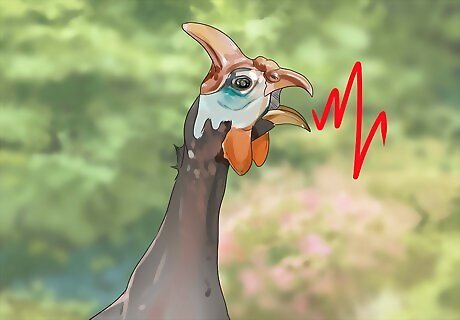
Listen for the call of a male guinea fowl. Male guinea fowls make a 1-syllable call that sounds like ‘chek.’ The male’s vocalization will either be a chirp or a yelp repeated at varying intervals. The vocalization has also been compared to the sound of a machine gun.

Listen for the call for a female guinea fowl. This is where things can get a little tricky, since female guinea fowls also make the 1-syllable ‘chek’ sound. However, females also make a 2-syllable call that can sound like a variety of words, like ‘buckwheat,’ ‘put-rock,’ or ‘qua-track.’ Typically, the first syllable will be short and the second syllable will be longer and rising in tone.
Examining a Guinea Fowl’s Wattle and Helmet
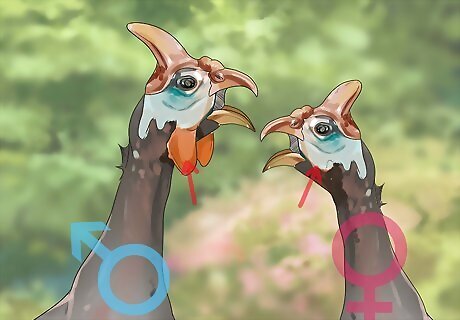
Observe the wattles. Wattles are flaps of skin that hang from a bird’s head or neck. Although male and female guinea fowls look very similar, it is possible to tell the sex by looking at the wattles. In adult male guinea fowls, the wattle is usually large, elongated, and folds upward toward the upper jaw. A female guinea fowl’s wattle will look fairly flat. The female guinea fowl’s wattle is usually smaller than that of a male guinea fowl.
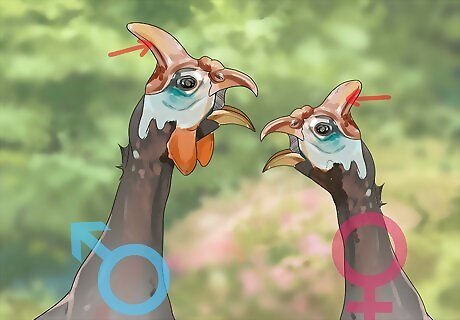
Look at the size of the helmet. A guinea fowl’s helmet, also known as a casque, is a prominent horn-like structure on the top of its head. The helmet is larger on males than females. The helmet on female guinea fowls tends to be short and narrow. Be aware that helmets can look very similar between males and females.
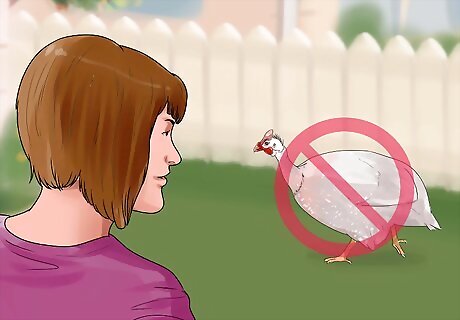
Do not rely on visual differences. Because male and female guinea fowls look similar, you should not use only physical characteristics to differentiate between the sexes. In fact, keets look nearly identical, making it that much more difficult to know the difference between males and females.
Vent Sexing a Guinea Fowl
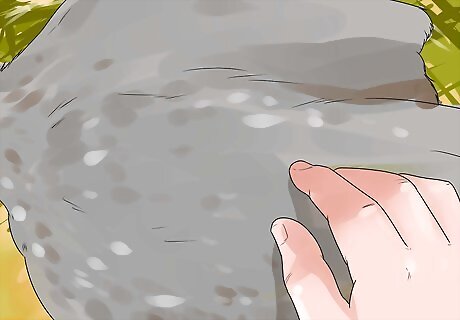
Turn the guinea fowl upside down. Another way to tell the sex of a guinea fowl is to examine the vent, which is the genital area of a bird that controls the elimination of bodily fluids. To perform vent sexing, use one of your hands to turn the guinea fowl upside down and push its tail towards its head. Consider having a friend help you with the procedure. It would help to be seated and rest the guinea fowl's back along the length of your leg. Vent sexing can be difficult to perform and may injure a bird. If you are not comfortable performing the procedure, have a bird expert do so. Vent sexing is usually performed in keets that are at least a few weeks old.
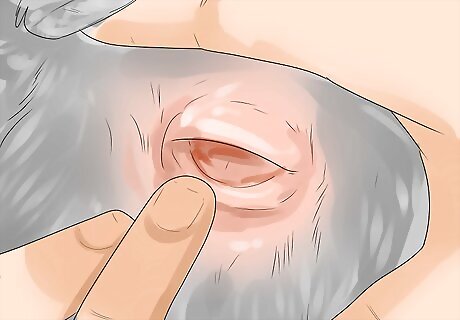
Expose the cloaca. The cloaca is the circular opening where reproductive, urinary, and digestive fluids exit a bird’s body. With your other hand (or the hand of your friend), place an index finger and thumb on either side of the vent. Gently separate those fingers to stretch and push out the cloaca. Use gentle, yet firm pressure when exposing the cloaca.
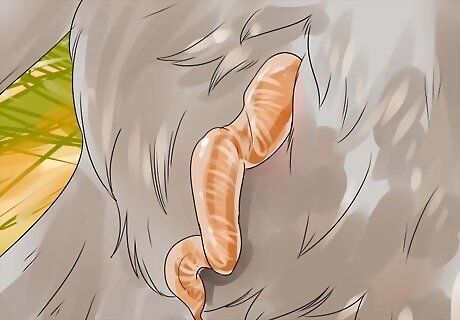
Examine the phallus. Typically, it is very difficult to differentiate between the sexual organs of male and female birds. A male guinea fowl’s phallus is longer and thicker than that of a female guinea fowl. The phallus becomes more distinguishable between the sexes at around 8 weeks of age.










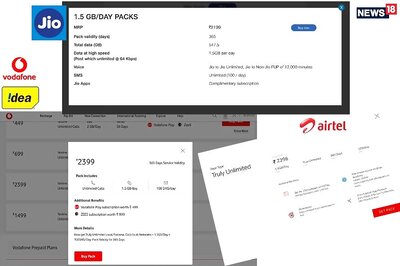









Comments
0 comment